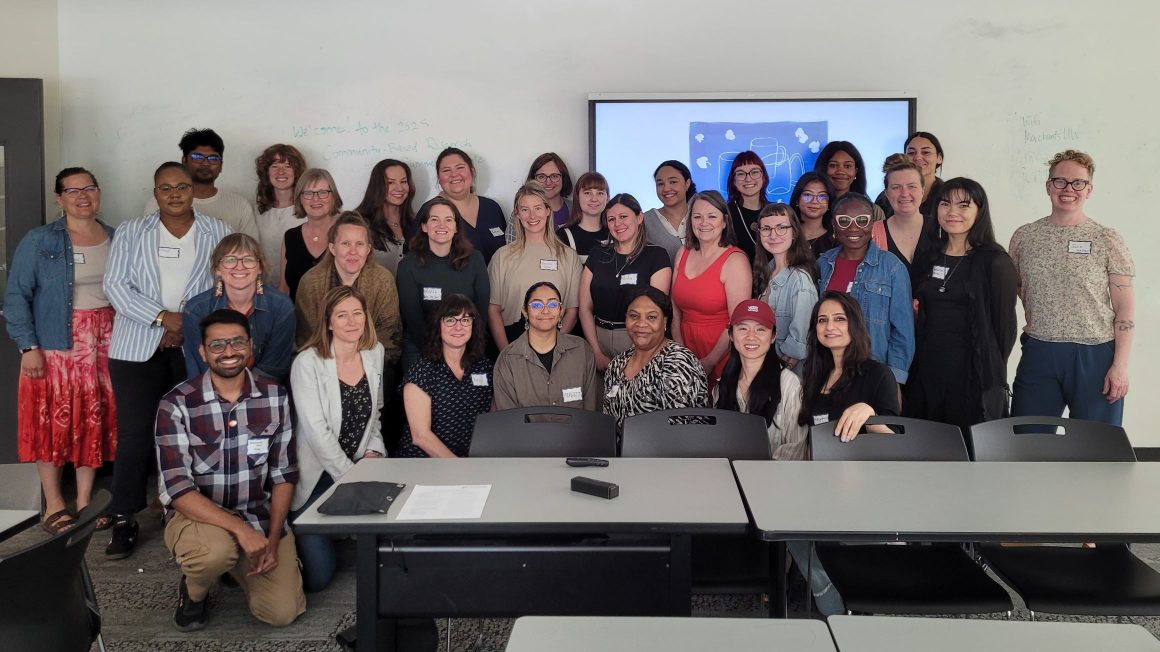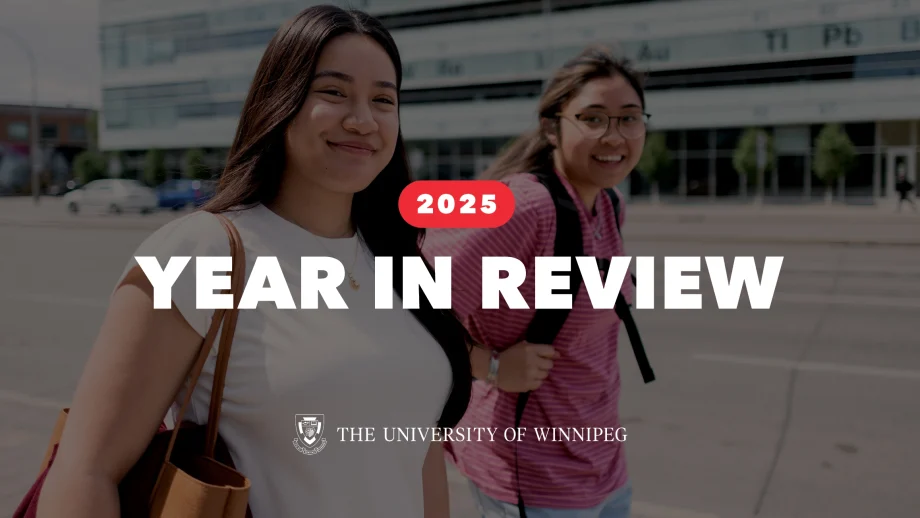The Community-Based Research Training Centre (CBRTC) held its third annual two-day experiential learning event, Community-Based Research (CBR) Summer Institute, at the University of Winnipeg’s Merchants Corner campus on May 26 and 27. This year’s theme, Hopeful Practices in Desperate Times: Community-based research for a change was presented to a maximum-capacity crowd of enthusiastic students, researchers, and community organizations.
The CBRTC is a joint project of the Manitoba Research Alliance (MRA) and The University of Winnipeg Research Office, that works to build skills in community-based research (CBR), especially for students.
The Summer Institute grew out of student and community-member feedback. “We frequently heard requests for longer and more in-depth workshops on CBR skills, opportunities for networking, and more detailed discussions on the nuances of CBR,” said Dr. Julie Chamberlain, Associate Professor in the Department of Urban and Inner-City Studies. “This input shaped our inaugural institute in 2023, and we have continued to build on that foundation. The 2025 Summer Institute offered a mix of panel discussions, skill building workshops, and hands-on activities led by UWinnipeg professors from a variety of disciplines who use CBR in their work.”
Day 1
This program gave me new energy to collaborate, network, volunteer, and dive more into CBR. I was empowered and inspired.
Summer Institute participant
The first day began with an introduction to CBR led by Dr. Chamberlain, followed by a keynote presentation by Kirsten Bernas from the West Central Women’s Resource Centre and the Right to Housing Coalition, on CBR as a practice of hope. Bernas shared the story of the non-linear path her CBR research and advocacy has taken and why it gives her a sense of hope even in trying times. The day ended with a two-hour reception on a beautiful spring evening under the trees at The Forks where participants had the chance to extend conversations with professors and each other.
This was followed by a perennial favorite event: the student panel discussion. This year the panel was moderated by Dr. Ryan Bullock, Canada Research Chair in Human-Environment Interactions. This is a chance for undergraduate research assistants and graduate students using CBR in their own work, to share their unique pathways into CBR and discuss how they got involved.
In the afternoon, Dr. Shauna MacKinnon, Department of Urban and Inner City-Studies led a hands-on workshop on How to Write an Op-ed related to your research for CBR Policy Advocacy.
Day 2
Dr. Patricia Fitzpatrick, Professor of Geography and Heather Fast of the Manitoba Eco-Network joined the second morning for a lively presentation on Cultivating Partnership and Working Together for Evidence-Based Solutions.
This was followed by a community organizations panel discussion moderated by Dr. Sarah Zell with panelists from Manitoba Harm Reduction Network, West Broadway Community Organization, and West Broadway Tenants Committee discussing how their CBR projects have evolved over time. Panel discussions are particularly popular at this event.
The institute concluded with a hands-on workshop on Visual Methods in CBR presented collaboratively by Dr. Kevin Walby from the Department of Criminal Justice, and visual artists and CBR researchers Natalie Baird and Toby Gillies. After an introduction to a selection of visual methods used in CBR, participants chose between screen-printing or power mapping before sharing their results and reflections with the group.
Continued interest in CBR
“The two days were filled with inspiring speakers, important conversations, and lots of laughter and the CBRTC is so grateful for the passion and enthusiasm of the CBR community,” said Dr. Chamberlain. “We cannot wait to use the lessons learned from this year to offer something even bigger and better next year!”
I loved the community of people who attended. It was such a diverse group of people, all bonded by the same goal of building community and solidarity.
Summer Institute participant
Holly Scotland, CBRTC program assistant and event organizer, agrees. “The enthusiasm and diversity of the group of presenters and participants who came together to learn from each other at this year’s event indicates a continued interest in CBR research across many different disciplines, and also a desire for community-based researchers at all levels to reach out and extend their connections with like-minded people.”





